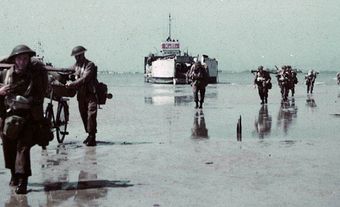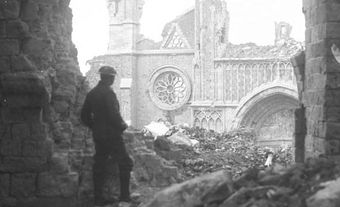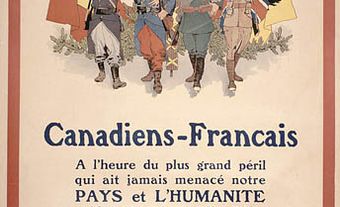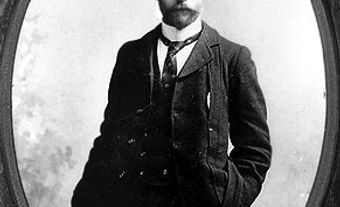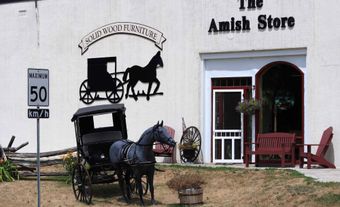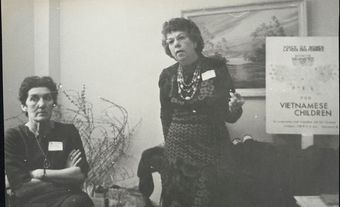Pacifism is an outlook based upon religious or humanitarian belief that condemns war and social violence as inhuman and irrational, if not absolutely and always morally wrong, and therefore demands personal nonparticipation in war or violent revolution as well as a commitment to nonviolent methods of resolving conflicts.

In Canada, pacifism is rooted in two traditions. One is sectarian pacifism, the historic nonresistance of pacifist religious sects that have tried to remain separate from the mainstream of Canadian society. By the beginning of the 20th century, the Quakers, Mennonites, Hutterites and Doukhobors had been guaranteed
the right to live according to their pacifist beliefs. They received specific exemptions from military obligations, and thus their immunity became entrenched in Canadian law and custom. Sectarian pacifists have provided the largest and most consistent
pacifist witness, particularly as conscientious objectors during both world wars.
The second tradition, which attracted popular support, is the liberal Protestant and humanitarian reform tradition, based upon the pacifist teachings of Jesus and belief in the irrationality of war and the brotherhood of man. The various expressions of liberal pacifism in Canada began with the progressive peace movement at the turn of the century, which emphasized international arbitration and conciliation as the best way to achieve world order. Nearly all political, church, farm, labour and women's groups had endorsed that principle before the outbreak of WWI. During the war, however, the liberal peace movement disintegrated, leaving only a few committed pacifists such as J.S. Woodsworth and William Ivens, renegade Methodist ministers who openly broke with their church in opposition to conscription. (Most anticonscription sentiment, notably in Québec, was not based upon pacifist belief.)
Liberal Pacificism Resurfaces
The postwar resurgence of liberal pacifism was fueled by both disillusionment with war and support for the League of Nations and disarmament. While Woodsworth and Agnes Macphail pressed the peace issue in Parliament, and the Women's International League for Peace and Freedom led a campaign to abolish cadet training and militarism in schools, an interwar peace movement gained momentum. By the early 1930s it had expanded into a broad front representing various religious and political persuasions, but it was united by the Depression in the quest for socioeconomic justice as well as peace. Under Woodsworth's leadership, the Co-operative Commonwealth Federation became the major political expression of this pacifist-socialist alignment.
At mid-decade, however, social radicals began to abandon pacifism for the fight against fascism in Spain, and by WWII even the CCF altered its traditional neutralist foreign policy, leaving only Woodsworth in Parliament to voice the pacifist position. The movement narrowed to a few Christian pacifists, primarily United Church ministers in the Fellowship of Reconciliation, who publicly reaffirmed their pacifism in the controversial "Witness Against War" manifesto and were repudiated by their own church leaders. Although sectarian pacifists had remained aloof from the interwar peace movement, they co-operated with liberal pacifists during the war in an effort to ensure the exemption of conscientious objectors from military service.
Populist Appeal of Pacifism
The dawn of the atomic age increased the urgency and popular appeal of pacifism, and the ranks of the postwar peace movement swelled. Since the new "nuclear pacifists" believed it was nuclear weapons that made war unthinkable, they emphasized nuclear disarmament and the easing of tensions between the USSR and the West. The new movement was initially dominated by the leftist Canadian Peace Congress under the leadership of James Endicott, as it launched a "Ban the Bomb" campaign and circulated the Stockholm Appeal, an international petition against nuclear weapons promoted by the Soviet-backed World Peace Council.
By the early 1960s, however, the Canadian Campaign for Nuclear Disarmament and the Voice of Women generated wider public support by exposing the hazards of radioactive fallout from the testing of nuclear weapons. Major pacifist groups endorsed the call for global test ban treaty as well as the campaign to block the deployment of nuclear armed missiles on Canadian soil. Then, by mid-decade, pacifists turned their attention to the Vietnam War and joined in antiwar protests and petitions, assisted American draft dodgers and organized humanitarian assistance for Vietnamese civilians.
Antinuclear Campaigns
With the end of that war pacifists again focused on the escalating nuclear arms race and in the 1980s such organizations as the Canadian Physicians for Social Responsibility, Project Ploughshares and Operation Dismantle further broadened the base of the peace movement in Canada. Particularly noteworthy was the increasing public involvement of the Mennonite community as both sectarian and liberal pacifists were swept up in the antinuclear campaign.

 Share on Facebook
Share on Facebook Share on X
Share on X Share by Email
Share by Email Share on Google Classroom
Share on Google Classroom
